- Sweet varieties of red currants
- Winter-hardy varieties.
- Varieties of red currants with large fruits
- Early varieties of red currants
Elegant red currant bushes will decorate any summer cottage. Undemanding in care, frost-resistant and high-yielding, this crop will delight you with delicious berries rich in vitamins.A wide variety of red currant varieties allows you to make a choice for every taste. Although most species are self-fertile, experts advise growing several varieties of red currants for cross-pollination and improved yield.
Sweet varieties of red currants
The taste of red currants depends on the ratio of sugars in the berries (4 -10%) and organic acids (1.5 - 4%). The fruits of sweet red currant varieties contain a sufficient amount of sugar and have a pronounced sweetness. Of course, there is a sourish taste, but to an insignificant extent, because... the proportion of acids in these species is small (about 2%).
"Early Sweet"
The fruits of the “Early Sweet” variety are rich red in color. The taste is dominated by sweetness with sour notes. Berry brush 8-9 cm long with small berries. Shrub of medium height, sparse. The variety is self-pollinating, frost-resistant with strong resistance to diseases and pests of this crop. The berries ripen early at the end of June. One bush gives up to 4 kg.
• Early ripening
• Fruit weight 0.6 - 0.9 g.
• Productivity 4 kg.
Advantages of the variety: sweet fruits that do not fall off for a long time, early ripening, frost resistance.
Flaws: berries unequal in size, forms shoots that are demanding on soil fertility.
"Sugar"
The berries of the “Sugar” variety are red, juicy with aromatic sweetness. Bushes of medium height with upright growing branches. Nine-centimeter fruit branches contain 15 - 20 medium-sized currants. "Sakharnaya" has high winter hardiness (-32). She is not afraid of temperature changes. Self-pollination is average. To achieve decent yields, you need to plant pollinating varieties nearby.The harvest begins at the end of June and continues until the end of August.
• Ripening period – early
• Fruit weight 0.8 g.
• Productivity 7 kg.
Advantages of the variety: sweet berries, high winter hardiness, long fruiting
Flaws: low self-pollination, requires protection from anthracnose and powdery mildew.
"Vika"
The berries of this variety of red currant with pronounced sweetness and slight sourness (sugar content 8.0%), purple-red, one-dimensional. A shrub up to one and a half meters tall with upright growing branches and dense dark green foliage. Berry tassels 12 cm long. "Vika" begins to bear fruit from an early age and tolerates frost well. Currants ripen in the first ten days of July. From a bush you can get 3 - 4 kg. There is sufficient resistance to anthracnose and powdery mildew.
• Mid-early ripening
• Fruit weight 0.5 - 0.8 g.
• Productivity 3 - 4 kg.
Advantages of the variety: sweet fruits, early fruiting, slightly susceptible to diseases
Flaws: small berry size.
"Dutch pink"
This species has compact, slender bushes 1.3 - 1.5 meters tall. Currants are transparent, pale pink in color with small seeds, aromatic and sweet in taste (sugar content 8%). The variety is fast-growing with average resistance to frost. The harvest ripens in mid-July. The fruits are relatively large. 7-9 kg are harvested from one plant. Immune to many fungal diseases with the exception of anthracnose.
• Medium ripening period
• Fruit weight 0.9 - 1.1 g.
• Productivity 7 - 9 kg.
Advantages of the variety: wonderful dessert taste of fruits, self-pollinating, productive.
Flaws: in severe frosts, branches can be damaged; they need protection from gall aphids and anthracnose.
"Viksne"
“Viksne” is considered one of the best varieties of red currants, thanks to the sweetish taste of the berries with a slight sour tint (sugar content 7.6%). The bushes are powerful and tall. Frost-resistant (-32), tolerates drought well. Fruit branches are 10 cm long. Cherry-colored berries have a dense skin. Typically yields are up to 5 kg. Disease resistance is satisfactory.
• Ripening period – mid-early
• Weight of berries 0.8 - 1.1 g.
• Productivity 5 kg.
Advantages of the variety: aromatic berries with a wonderful taste, drought-resistant, frost-resistant.
Flaws: is damaged by gall aphids; during early flowering, flower buds may suffer from frost.
"Pink Pearl"
This variety of red currant has large pink berries that are exceptionally sweet (there is a slight sour taste). Medium spreading decorative bushes. High winter hardiness. In the second half of July, it is time to collect currants. Yields up to 7 kg. from a plant. Immune to fungal diseases.
• Medium ripening period
• Weight of berries 0.9 -1.3 g.
• Productivity 7 kg.
Advantages of the variety: sweet dessert taste of the fruit, winter-hardy, resistant to the main diseases of this crop.
Flaws: a large area for planting is required.
Winter-hardy red currant varieties
Most red currant varieties are winter-hardy to one degree or another. But among them stand out forms with a high degree of frost resistance and recommended for planting in regions with harsh winters.
"Natalie"
The Natalie variety is characterized by excellent winter hardiness and is successfully grown in the Moscow region and other areas of the middle zone. The bushes are of short stature, the branches grow upright with dark green foliage. The fruit branches are short, about 8 - 9 cm. The berries are intense purple in color and have a sweet and sour taste. The harvest ripens in mid-July. "Natalie" is highly resistant to fungal diseases and pests.
• Ripening period – average
• Weight of berries is 0.7-1.0 g.
• Productivity 4 kg.
Advantages of the variety: strong frost resistance, excellent taste of berries, resistant to diseases
Flaws: Over time, the bushes become very thick and therefore require rejuvenation.
"Jonker van Tets"
The variety is highly frost-resistant and can bear fruit successfully in areas with harsh winters. The bushes of this species are vigorous with upright growing branches and densely foliated. Ten-centimeter fruit clusters contain 10-12 dark red berries with strong skin. The taste of currants is sweet with sour shades, dessert. "Jonker van Tets" starts bearing fruit early. The fruits ripen by early July. From one bush you can take 6-7 kg. It suffers from powdery mildew and anthracnose to a minor extent.
• Early ripening
• Weight of berries 0.7 - 0.8 g.
• Productivity 6 - 7 kg.
Advantages of the type: excellent frost resistance, early fruiting, disease resistant. One of the best varieties of red currant.
Flaws: early flowering does not exclude the possibility of damage by spring frosts; it can be damaged by bud mites.
"Beloved"
Thanks to its very good winter hardiness, “Beloved” belongs to the group of red currant varieties recommended for planting in Siberia and the Urals.Withstands severe frosts without shelter. The bush is of medium height, slightly branched. Berry clusters 7 cm long with 12 - 15 purple currants. The taste of the fruit is sweet and sour. The harvest ripens by early July. The variety is self-pollinating and produces decent yields. It is characterized by good resistance to powdery mildew and anthracnose.
• Medium ripening period
• Weight of berries 0.6 - 0.8 g.
• Productivity 3 - 4 kg.
Advantages of the type: high frost resistance, self-fertility, productive
Flaws: low resistance to leaf spot
"Red Andreichenko"
High winter hardiness and the ability to withstand spring frosts during flowering give excellent results when growing this variety of currant in the Urals and Siberia. Bushes up to one and a half meters in height, slightly spreading. The fruits are rich red in color and sourish-sweet. The species is self-pollinating, early-fertile. Already two-year-old young plants bear their first harvests. In mid-July, the ripe berries are ready for picking. Resistant to powdery mildew and bud mite.
• Ripening period – average
• Weight of berries 0.7 - 1.0 g.
• Productivity 6 kg.
Advantages of the type: winter-hardy, early fruiting, good self-pollination, productive
Flaws: May be affected by anthracnose and gall aphids.
"Dutch Red"
This species is characterized by high winter hardiness. Bushes of strong growth, dense foliage. Berry clusters 8 cm long. Coral-colored currants, non-uniform 0.6 - 1.0 g, sour-sweet, pleasant to the taste. The time to collect currants comes in August. The fruits retain their taste and do not fall off until autumn. Quite strong resistance to diseases and pests.
• Late ripening
• Weight of berries 0.6 - 1.0 g.
• Productivity 5 - 6 kg.
Advantages of the type: tolerates harsh winters well, self-pollinating, immune to diseases and pests
Flaws: hard large seeds in fruits
Large-fruited varieties of red currants
"Ural Beauty"
“Ural Beauty” is remarkable for its very large berries (up to 1.7 g). The bushes are medium-sized, compact, with abundant foliage. The length of the berry branches is about 7 cm. The currants are densely red, even in size, and have a sweet taste. The plant is able to be sufficiently pollinated by its own pollen. Withstands severe frosts well. The fruits ripen at the end of July. Harvests are abundant and annual. High resistance to fungal diseases. May be damaged to a small extent by pests.
• Average ripening period
• Fruit weight 1.5 - 1.7 g.
• Productivity 15 kg.
Advantages of the type: large sweet fruits, high frost resistance and productivity, good disease resistance.
Flaws: During drought, the fruit ovaries fall off and the berries become smaller.
"Ilyinka"
“Ilyinka” is famous for its large fruit. The bushes are low, upright growing branches with dense foliage. The tassels are dense, about 6 cm long. The currants are dark red, large, sweet and sour. A variety with good winter hardiness, self-fertile. The harvest ripens in mid-July. The bush produces up to 5 kg. Resistance to powdery mildew and anthracnose is strong.
• Ripening period – average
• Fruit weight 0.9 - 1.6 g.
• Productivity 5 kg.
Advantages of the type: large tasty fruits, frost-resistant, not affected by diseases
Flaws: may be damaged by sawflies to a small extent.
"Cascade"
One of the best varieties of red currant with excellent large, even-sized fruits. A powerful shrub with upright growing shoots.Fruit branches 10 cm long contain up to 15 beautiful coral berries with a sweet and sour taste. The form is winter-hardy and produces good yields. The fruits ripen in the first half of July. Resistance to diseases and pests is not strong enough.
• Mid-early ripening
• Weight of berries 1.2 - 1.4 g.
• Productivity 3.5 kg.
Advantages of the type: large fruits with dessert taste, frost-resistant
Flaws: needs protection from fungal diseases.
"Roland"
Another variety characterized by large fruit. Bushes of strong growth, compact. Twelve-centimeter berry branches contain more than 20 berries. The species is early-bearing and begins to bear fruit in the 3rd year. The berries are juicy red, not one-dimensional, and taste sourish-sweet. “Rolan” safely endures cold winters and brings abundant harvests. The fruits ripen in mid-July. Disease resistance is satisfactory.
• Ripening period – mid-early
• Weight of berries 0.7 - 1.5 g.
• Productivity 6 - 7 kg.
Advantages of the type: large-fruited, early-fruiting, frost-resistant, productive
Flaws: sour berries, possible damage by bud mites.
Alpha
"Alpha" is a large-fruited variety of red currant. The shrub is medium-sized, of moderate density. Currants are large, one-dimensional with a sweet and sour taste. The species is quite frost-resistant with good self-pollination. The harvest ripens in the first half of July. Slightly damaged by diseases and pests.
• Mid-early ripening
• Weight of berries 0.9 - 1.5 g.
• Productivity 3 - 4 kg.
Advantages of the type: large berries with dessert taste, frost resistance, good resistance to powdery mildew.
Early varieties of red currants
For early types of red currants, the berries ripen at the end of June - beginning of July. This also includes the types “Early Sweet”, “Sugar”, and “Jonker van Tets” discussed above. We offer an overview of several more early varieties.
"Firstborn"
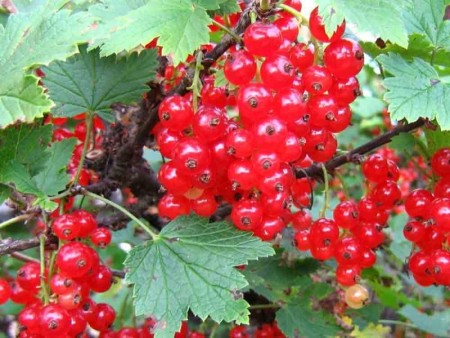
• Early ripening
• Weight of berries 0.4 - 0.7 g.
• Productivity 6 - 7 kg.
Advantages of the type: self-fertile, frost-resistant, good disease resistance
Flaws: The berries are bunched together (from medium to small), suffering from spider mites.
"Serpentine"
"Serpentine" is an early ripening variety of red currant. Shrub of moderate growth with powerful straight shoots. The berry branches are long (up to 12 cm). Red currants, large. The taste is characterized by a predominance of sourness (acid content 2.6%, sugar 5.5%). "Serpentine" is not afraid of severe frosts. It is perfectly pollinated by its own pollen and produces abundant harvests. Slight damage from diseases and pests.
• Early ripening
• Fruit weight 0.9 - 1.1 g.
• Productivity 8 - 10 kg.
Advantages of the variety: frost-resistant, self-fertile, high-yielding.
Flaws: sour taste of berries, average drought resistance.
"Hope"
“Nadezhda” is an early ripening variety of red currant. Compact bush of medium height with dense foliage. The berry bunch is dense, about 8 cm long. The fruits are dark burgundy and small in size. The taste is sweet and sour with pronounced sourness.Frost-resistant, self-pollinating. The berries ripen at the end of June. You can collect up to 7 kg from a bush. Resistance to diseases and pests is good.
• Early ripening
• Fruit weight 0.7 - 1.0 g.
• Productivity 6.5 - 7 kg.
Advantages of the variety: very early ripening of fruits, good winter hardiness, abundant fruiting
Flaws: sour taste of berries
"Ural souvenir"
A red currant variety with a short ripening period. The bushes are medium-sized, compact, densely leafy. Fruit tassels of medium length (9 cm). Currants are medium-sized, smooth, bright red. The taste is sweet with a sour aftertaste. The variety is quite adapted to frosty conditions, self-pollinating with good yield. Excellent resistance to diseases and pests.
• Ripening period – early
• Weight of berries 0.5 - 1.2 g.
• Productivity 2.5 - 5 kg.
Advantages of the variety: sweet dessert taste of fruits, high frost resistance and disease resistance
Flaws: With poor care, the berries become smaller.
Note: Plant several different varieties of red currant bushes on your plot - early, medium, late - and you will enjoy delicious “vitamins” all summer.
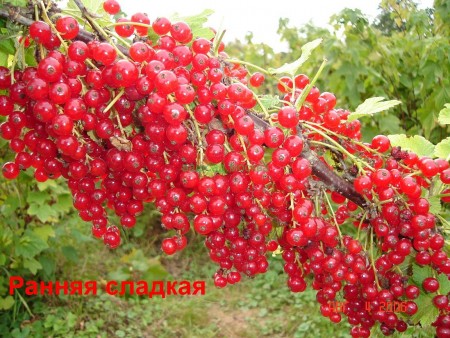
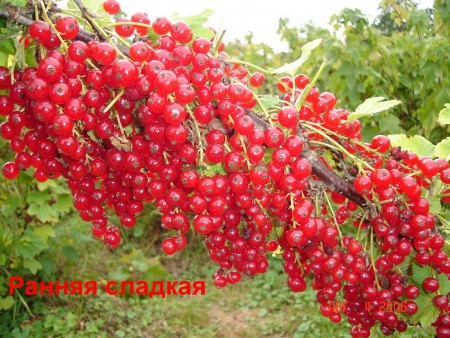
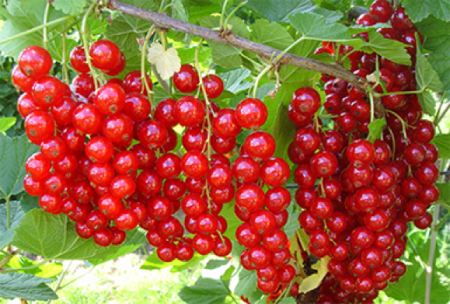
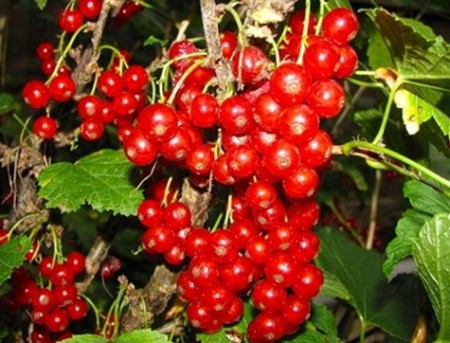
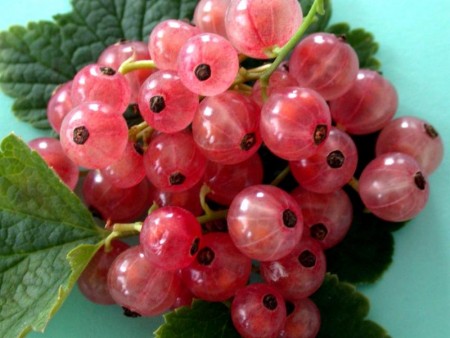
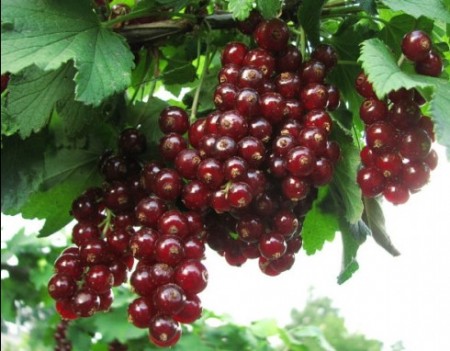

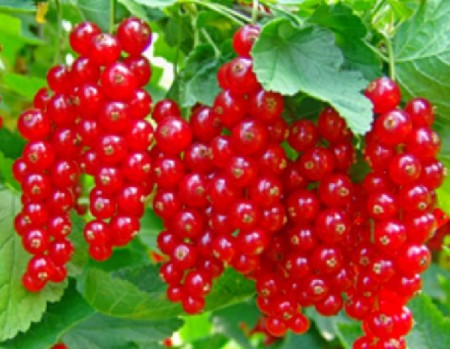
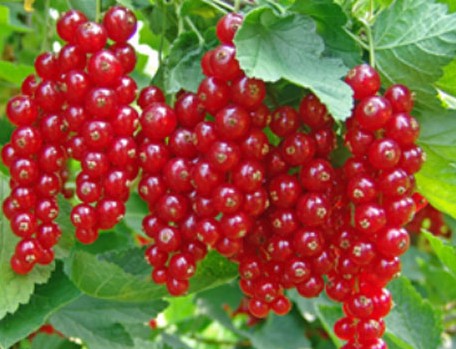
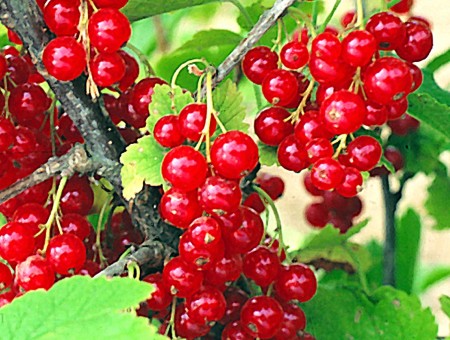
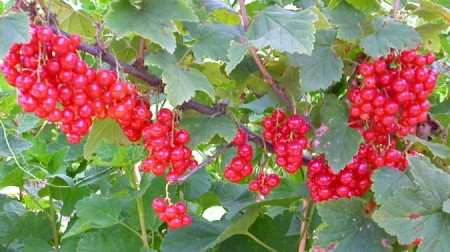
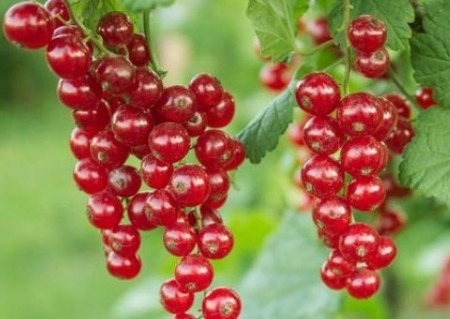
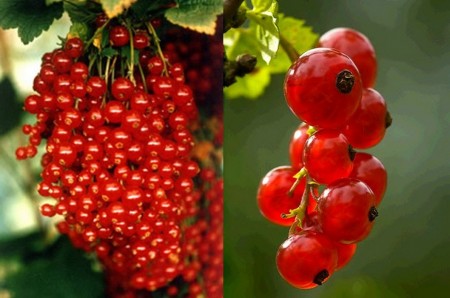
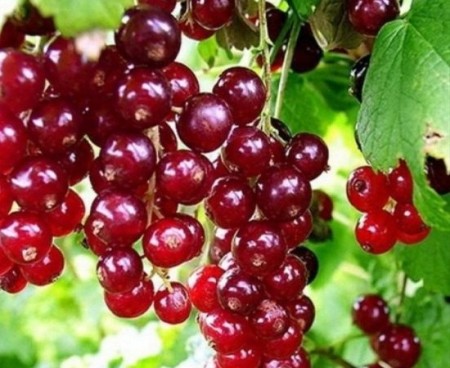
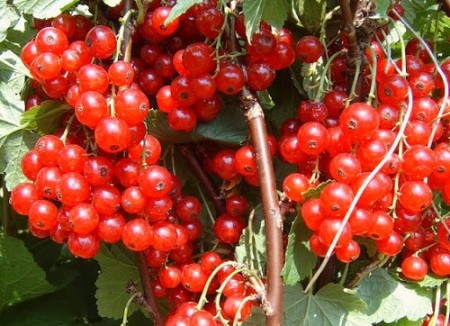
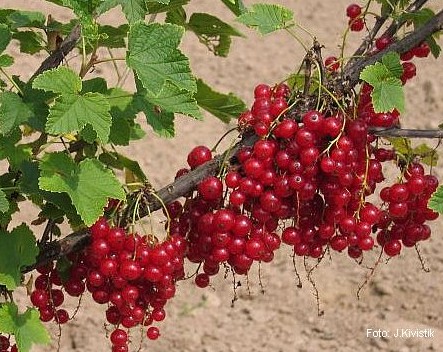
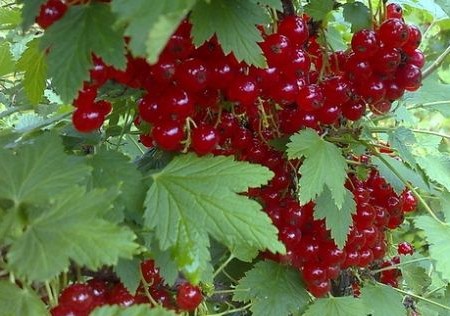
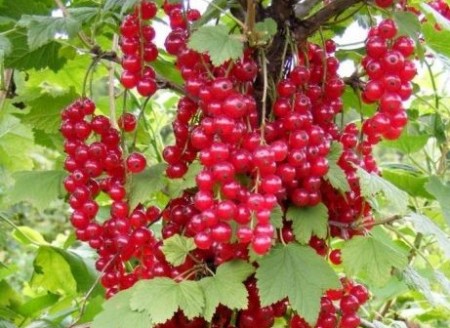
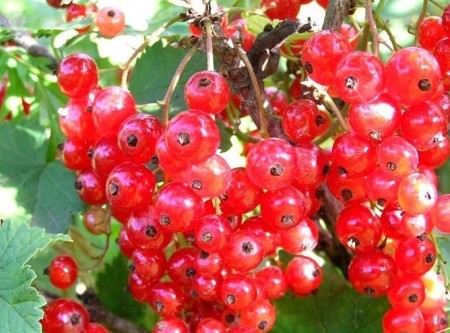
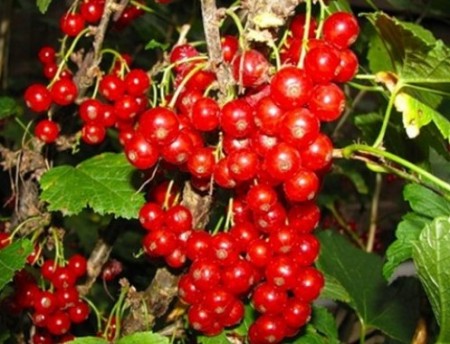

 (18 ratings, average: 4,56 out of 5)
(18 ratings, average: 4,56 out of 5) CUCUMBERS NEVER GET SICK, I'VE BEEN USING ONLY THIS FOR 40 YEARS! I SHARE A SECRET WITH YOU, CUCUMBERS ARE LIKE THE PICTURE!
CUCUMBERS NEVER GET SICK, I'VE BEEN USING ONLY THIS FOR 40 YEARS! I SHARE A SECRET WITH YOU, CUCUMBERS ARE LIKE THE PICTURE! You can dig a bucket of potatoes from each bush. Do you think these are fairy tales? Watch the video
You can dig a bucket of potatoes from each bush. Do you think these are fairy tales? Watch the video
 How our fellow gardeners work in Korea. There is a lot to learn and just fun to watch.
How our fellow gardeners work in Korea. There is a lot to learn and just fun to watch. Eye trainer. The author claims that with daily viewing, vision is restored. They don't charge money for views.
Eye trainer. The author claims that with daily viewing, vision is restored. They don't charge money for views. A 3-ingredient cake recipe in 30 minutes is better than Napoleon. Simple and very tasty.
A 3-ingredient cake recipe in 30 minutes is better than Napoleon. Simple and very tasty. Therapeutic exercises for cervical osteochondrosis. A complete set of exercises.
Therapeutic exercises for cervical osteochondrosis. A complete set of exercises. Which indoor plants match your zodiac sign?
Which indoor plants match your zodiac sign? What about them? Excursion to German dachas.
What about them? Excursion to German dachas.